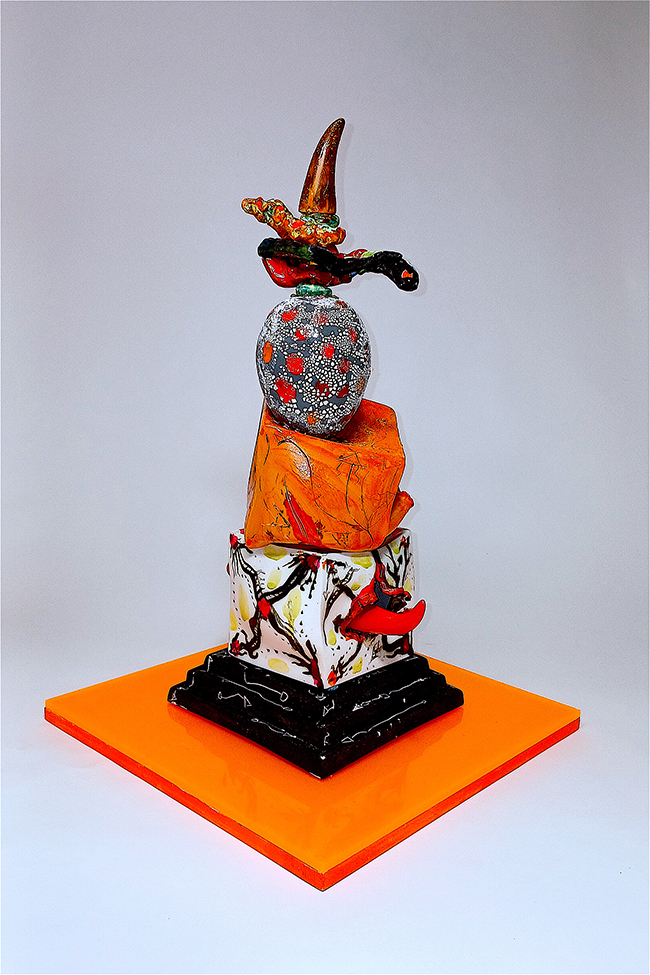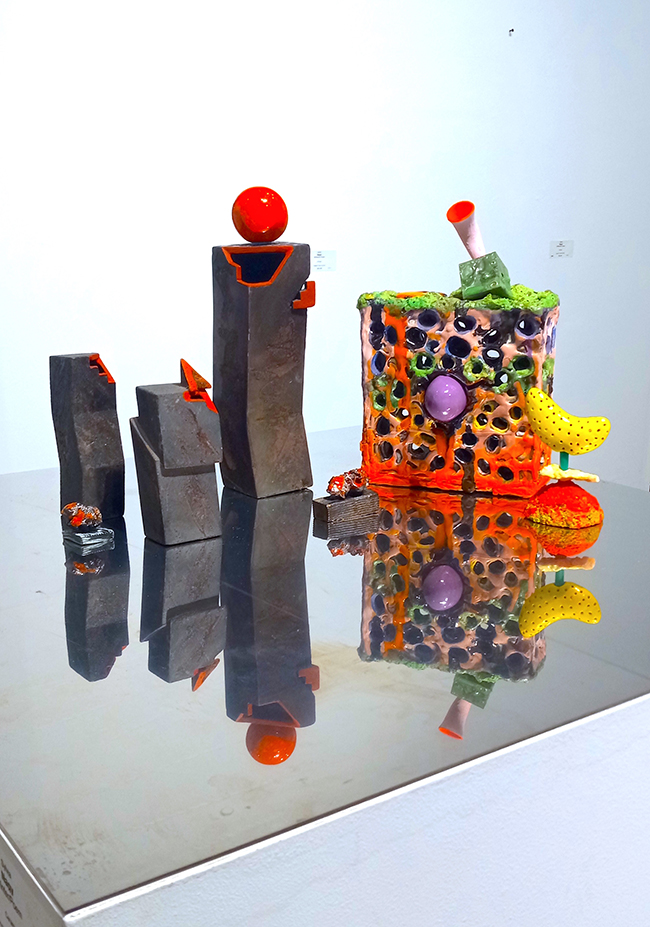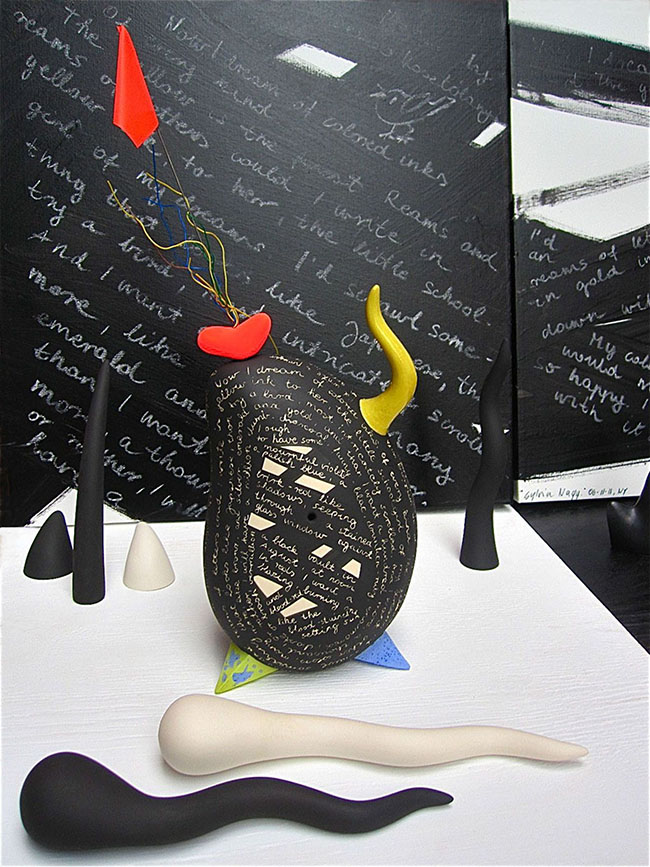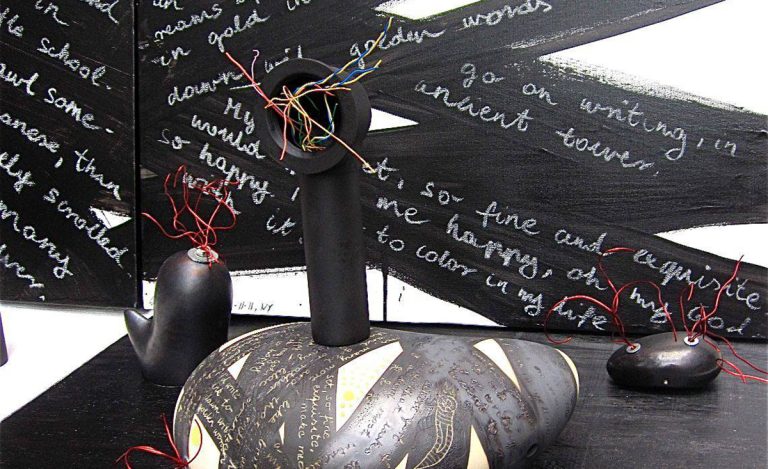Sylvia Nagy moves easily between the technical and the intuitive. Her background in industrial ceramics is rooted in a strong foundation—she studied at the Moholy-Nagy University of Art and Design in Budapest, where she earned her MFA in Silicet Industrial Technology and Art. That training set the tone for a practice that’s both structured and exploratory. Later, at Parsons School of Design in New York, she expanded her role as an artist and educator, even designing a course on plaster mold making. Whether she’s working in a studio or a classroom, Nagy brings an eye for form and a deep curiosity about how objects carry meaning. Her career has taken her around the globe—from Hungary to Japan, China, Germany, and the U.S.—and each stop has shaped how she works. She’s now part of the International Academy of Ceramics in Geneva, with her work housed in museum collections across Europe and Asia. Outside of ceramics, she keeps a steady interest in movement, photography, fashion, and the rhythm of design culture.

Clay, for Nagy, is more than a material—it’s a way to ask questions. She often talks about the soul’s connection to earth through clay, and how shaping it becomes a way of understanding change, tension, and balance. She doesn’t think of intuition as a mystical trait—it’s just a different kind of intelligence, a kind of listening. “Intuition doesn’t speak English,” she says. Instead, it speaks in feelings, vibrations, and symbols. Her work follows this line of thought. It isn’t built from sketches or blueprints. It grows, slowly, with energy and instinct.
The world we live in is unstable—shifting politically, environmentally, and emotionally. Nagy feels that, and her ceramics reflect it. She sees red flags everywhere—signals of collapse or conflict—and through her practice, she tries to turn those signals into something we can hold and understand. Her pieces aren’t responses to headlines, though. They’re slower, more internal. A way to stay connected while everything around us spins.

She creates objects that seem to pulse. Her work feels charged—whether from the texture of the surface or the shape of the form. She’s not interested in perfection or polish. She’s interested in presence. In how objects hold emotion. Her use of clay taps into old traditions, but her thinking is current—she brings in science, technology, energy fields, even ideas from quantum theory. She’s drawn to ideas that don’t quite fit into language, but still feel real. Her bookshelf and browser are filled with documentaries and research—videos about Gaia, consciousness, the physics of connection. That material filters into her ceramics without being literal.

Nagy’s interest in clay also extends into healing. She’s taught ceramics not just in university studios but also in art therapy settings. She’s worked with people of all ages and abilities—people who’ve experienced trauma, who live with disability, who are navigating change. For her, working with clay can be grounding. It can bring people back to their own sense of movement and expression. It doesn’t solve problems, but it gives shape to what’s otherwise stuck inside.
In many cultures, ceramics have always held spiritual value. They weren’t just bowls or vessels—they carried stories, customs, and beliefs. Nagy respects that role. Her pieces aren’t made for mass production. They carry the weight of slowness, of touch. Sometimes they look weathered or ancient. Sometimes they echo a natural pattern—a ripple in water, a cracked surface, the edge of a stone.
Her work isn’t loud. It doesn’t shout. But it stays with you. She wants the viewer to spend time, to feel something before trying to name it. In a way, her practice is about reconnecting. With the earth. With the body. With the unseen.
Sylvia Nagy sees creativity as a way to stay human. In the face of conflict, she makes. In the face of loss, she shapes. And through that process, she invites us to do the same—quietly, deliberately, with care. Her ceramics aren’t there to impress. They’re there to remind us what listening feels like.

